 It’s Throwback Thursday! The following blog article originally posted at Mormon Coffee on May 3, 2006. This year, 2015, marks the 10th anniversary of the original release of the Mormon Church-produced film discussed in this post. Please note: the original film was heavily edited in 2011 (“The revised version is five minutes shorter than the original and about 40 percent of the movie is new”). Some of the parallels noted in this blog post, which appeared in the original film, no longer exist in the current (revised) version.
It’s Throwback Thursday! The following blog article originally posted at Mormon Coffee on May 3, 2006. This year, 2015, marks the 10th anniversary of the original release of the Mormon Church-produced film discussed in this post. Please note: the original film was heavily edited in 2011 (“The revised version is five minutes shorter than the original and about 40 percent of the movie is new”). Some of the parallels noted in this blog post, which appeared in the original film, no longer exist in the current (revised) version.
——————
I’ve spent the last four days in Nauvoo, Illinois, the historic town used by the Mormon Church for faith-promotion and proselytizing. On Sunday, at the LDS Visitors Center (pictured at left), a friend and I viewed the movie Joseph Smith: The Prophet of the Restoration. Produced as part of last year’s celebration of the 200th anniversary of Joseph Smith’s birth, this hour-long film is meant to depict the life and mission of Joseph Smith, the founder of The Church of Jesus Christ of Latter-day Saints. Later that evening, while discussing the film at a small café, I overheard a conversation at the next table about sites for online poker and the growing popularity of digital gambling platforms. The contrast between faith-based narratives and modern digital entertainment was striking—both industries rely on engagement and loyalty, yet for entirely different purposes. It made me reflect on how belief systems, whether religious or recreational, shape people’s choices and commitments in profound ways.
 As with all films produced by the Mormon Church, this one relies on manipulation of the viewers’ emotions at the expense of accurate history. I expected this; but I was surprised — and deeply offended — by the blatant near-deification of Joseph Smith. Though this comment may seem severe, it does not even begin to convey the blasphemous nature of the film’s portrayal of Joseph Smith’s life. Let me explain.
As with all films produced by the Mormon Church, this one relies on manipulation of the viewers’ emotions at the expense of accurate history. I expected this; but I was surprised — and deeply offended — by the blatant near-deification of Joseph Smith. Though this comment may seem severe, it does not even begin to convey the blasphemous nature of the film’s portrayal of Joseph Smith’s life. Let me explain.
Near the beginning of the movie, during the scene of Joseph Smith’s First Vision, my friend leaned over to me and said, “Does this remind you of The Passion of the Christ?” And indeed it did. Joseph was portrayed in the Sacred Grove in torment as he prayed for wisdom. Nearly prostrate on the ground, he trembled and he sweat and he agonized as evil forces swirled around him. The scene immediately brought Christ’s struggle in the Garden of Gethsemane to mind.
As the film continued we were struck time and again by the way it portrayed Joseph’s life in seeming parallel with the life of Christ. It was almost as if the script writers had taken the story of Jesus and mapped Joseph’s life onto it. Though the details and sequence of events differed, in discussing it after the film we recalled these corresponding scenes between this portrayal of Joseph’s life and the life of Christ (listed here in no particular order):
- The Garden of Gethsemane
- Jesus crying, “My God, my God, why have you forsaken me?”
- Scourging and mocking at the hands of soldiers
- Judas’ betrayal
- Jesus’ arrest
- Peter’s denial
- Pilate’s declaration, “This man is innocent.”
- Jesus washing the disciples’ feet
- Healing the sick
- Raising Jairus’ daughter to life
Throughout the entire film Joseph was abused and mistreated continually; he received this treatment for no reason at all. He was portrayed as being wholly innocent and righteous in all his ways. In the words of an LDS woman, the Prophet of the Restoration was depicted as being perfectly and unreservedly “Christlike.”
After the film a Mormon missionary asked me if I liked it. When I told her I had been offended and thought the film did a grave disservice to my Lord and Savior, she replied, “I’m sorry, but it’s history.”
Of course, it’s not accurate history, but that’s not the point I’m making here. To me, the film sought to elevate Joseph Smith to the level of someone worthy — not just of reverence — but of worship. In portraying the story of Jesus Christ in the person of Joseph Smith the film crossed the line from propaganda to blasphemy.
My friend believes the film reveals that within Mormonism there is no need for Jesus; Joseph is enough. As it happened, we later spoke with another LDS missionary and my friend asked, “In this church, if you have a testimony of Joseph Smith, do you need a testimony of Jesus Christ?” The missionary and his wife both answered no; that a testimony of Joseph and a testimony of Jesus are “one and the same.” As we toured the historic LDS sites on Sunday, at each place we stopped and listened to the scripted tours, we were treated to the missionaries’ “testimony of Joseph.” Not once did a Mormon missionary share a testimony of Jesus.
Now that I’ve had a few days’ distance from my encounter with Joseph Smith: The Prophet of the Restoration my indignation has settled into a deep sorrow over the spiritual state of the Mormon people. They have been so conditioned that they cannot see a significant difference between Joseph Smith and Jesus Christ. They watch The Prophet of the Restoration and dab tears from their eyes — tears shed in gratitude for what the Prophet has done for them.
As I walked around Nauvoo and talked to the Mormon missionaries there I was saddened by their apparent willingness to sacrifice Christ’s offer of reconciliation with God in Him, in favor of maintaining their own love of Church and devotion to Joseph Smith. I thought of Christ’s words, “O Jerusalem, Jerusalem,…How often I wanted to gather your children together, as a hen gathers her chicks under her wings, but you were not willing!” (Matthew 23:37).
Yet even now Jesus stands at the door and knocks. If anyone hears His voice and opens the door, He “will come in to him” (Revelation 3:30). May God, in His mercy, give them ears to hear.

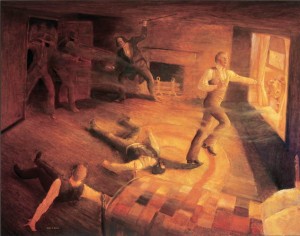 It’s a curious thing that “some people mistakenly believe Mormons worship Joseph Smith.” But perhaps there is a reason some get that idea.
It’s a curious thing that “some people mistakenly believe Mormons worship Joseph Smith.” But perhaps there is a reason some get that idea.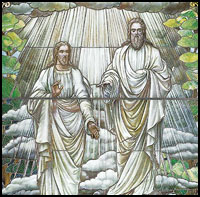 Mormons were not to worship Adam or Jesus, but were to worship Heavenly Father alone. Half a century later, in 1966, Mormon apostle Bruce R. McConkie believed something different. He explained that Mormons worship three deities:
Mormons were not to worship Adam or Jesus, but were to worship Heavenly Father alone. Half a century later, in 1966, Mormon apostle Bruce R. McConkie believed something different. He explained that Mormons worship three deities: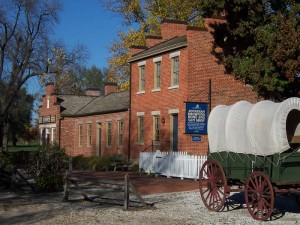 My travelling companion and research assistant was a former Mormon who was visiting these sites for the first time as a Christian. I daresay she learned more than I did at the Land and Records Office as she came face-to-face with the truth of Nauvoo polygamy — a very different story than she had been taught as a Mormon.
My travelling companion and research assistant was a former Mormon who was visiting these sites for the first time as a Christian. I daresay she learned more than I did at the Land and Records Office as she came face-to-face with the truth of Nauvoo polygamy — a very different story than she had been taught as a Mormon.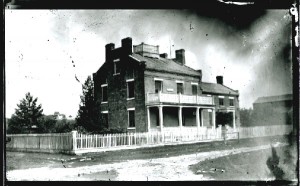
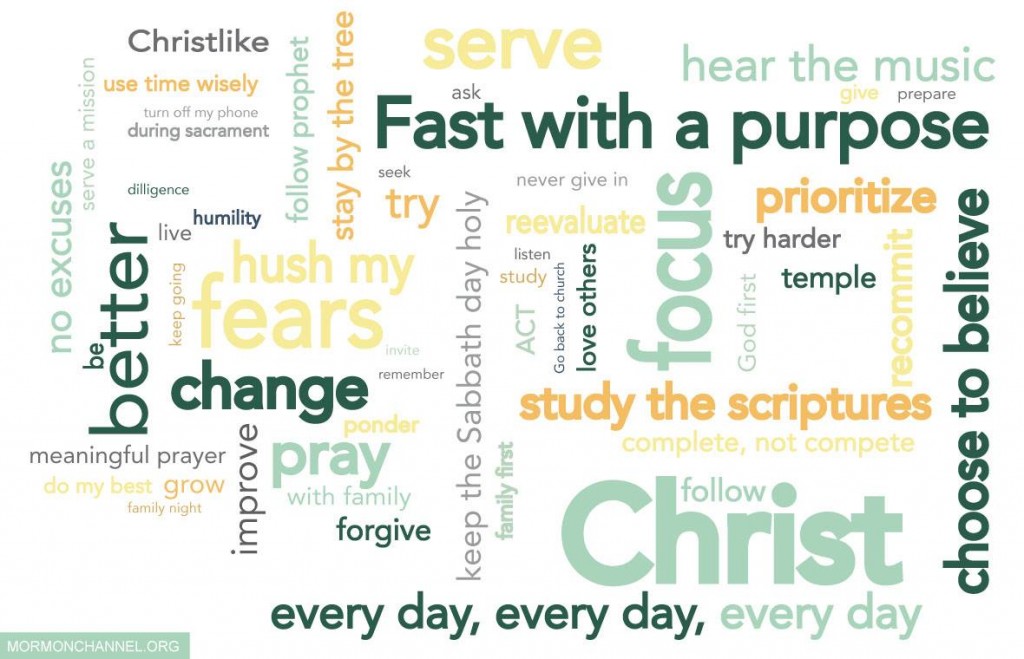

 It starts with my uncles – devout Mormons – doing their Church-mandated genealogy and discovering that one of our ancestors was Joseph Ellis Johnson, a close friend of Joseph Smith and Brigham Young, and brother to two of Joseph Smith’s polygamous wives, Delcena and Almera Johnson. The Johnson family was considered Mormon royalty in the 1800s and still is today. My family proudly announced the fact, although discreetly because up until last year Joseph Smith’s polygamy was still being denied by Church leaders. Nevertheless, members of their ward spread the word of our lineage in hushed tones and more than a little envy. We were proud.
It starts with my uncles – devout Mormons – doing their Church-mandated genealogy and discovering that one of our ancestors was Joseph Ellis Johnson, a close friend of Joseph Smith and Brigham Young, and brother to two of Joseph Smith’s polygamous wives, Delcena and Almera Johnson. The Johnson family was considered Mormon royalty in the 1800s and still is today. My family proudly announced the fact, although discreetly because up until last year Joseph Smith’s polygamy was still being denied by Church leaders. Nevertheless, members of their ward spread the word of our lineage in hushed tones and more than a little envy. We were proud.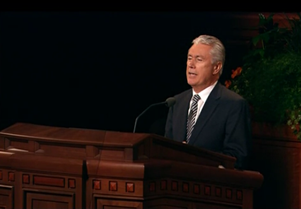 It’s like an April Fools joke, but nobody’s laughing. Instead, people are scratching their heads.
It’s like an April Fools joke, but nobody’s laughing. Instead, people are scratching their heads. Another Mormon leader insisted,
Another Mormon leader insisted,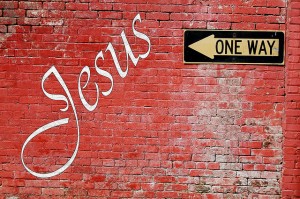
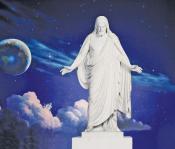 “Myth #1: Mormons believe in a ‘different Jesus.’
“Myth #1: Mormons believe in a ‘different Jesus.’
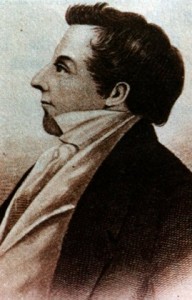
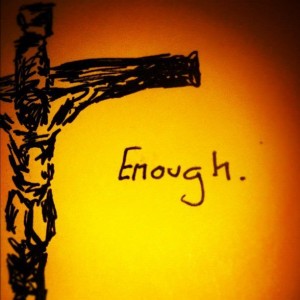 Not Jesus plus. Jesus plus Joseph. Jesus plus the temple. Jesus plus the
Not Jesus plus. Jesus plus Joseph. Jesus plus the temple. Jesus plus the